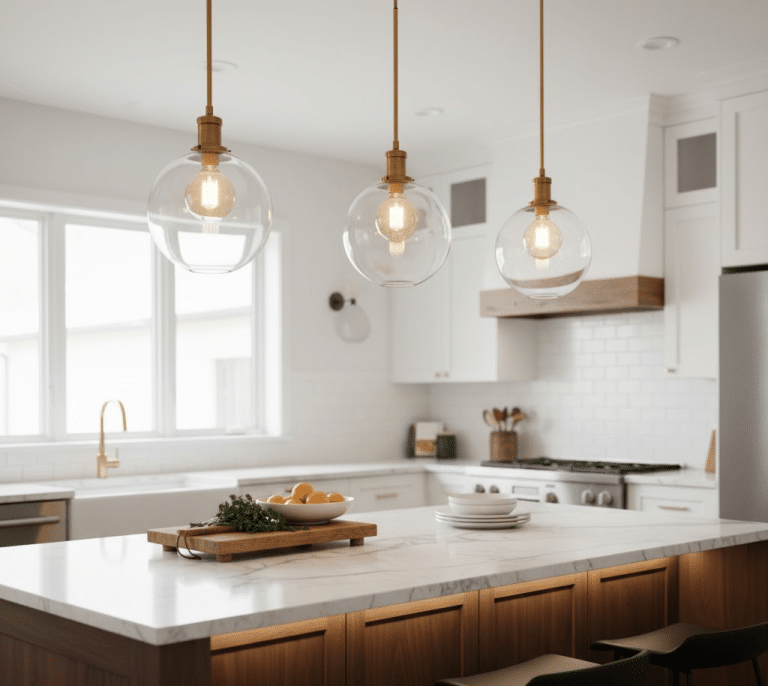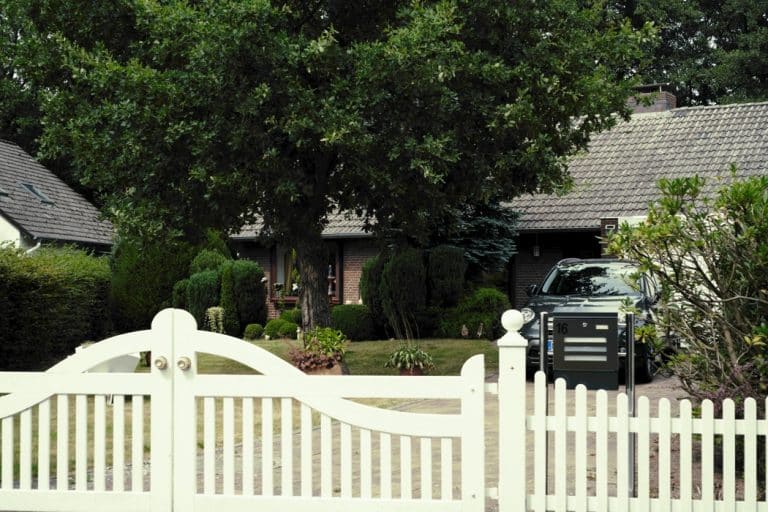If you’re short on garden space or tired of bending down to harvest your crops, growing vegetables on a trellis might be the perfect solution.
I remember the first time I tried vertical gardening, my tiny backyard suddenly felt spacious and productive. Not only did it help me stay organized, but I also saw fewer pests and cleaner veggies.
In this blog, I’ll walk you through some of the best vegetables that grow on a trellis, how to grow them, and what tools or support systems work best.
From peas and pole beans to cucumbers and squash, vertical gardening is both beginner-friendly and satisfying.
It’s one of those simple changes that transform your gardening routine. Let’s get into how to grow more food in less space, without compromising on flavor or harvest size.
Why Choose Vegetables That Grow on Trellises?
Growing vegetables on a trellis is one of the most effective ways to maximize your garden space. Vertical gardening allows plants to grow upward instead of outward, freeing up valuable ground space for other crops or pathways.
This setup enhances air circulation around the plants, thereby reducing the risk of fungal diseases such as powdery mildew and rot. With the vegetables elevated, harvesting becomes much easier and less physically demanding.
You also get cleaner produce since it’s not sitting on damp soil. Another significant benefit is that you can grow more in tight spaces, perfect for patios, balconies, and small backyards.
Even if you’re growing peas, beans, or cucumbers, trellising gives your plants room to breathe and flourish. It’s a low-effort way to increase your yield, reduce pests, and enjoy a healthier, more productive garden.
Best Trellis-Friendly Vegetables to Grow
Some vegetables grow by climbing, thrive with support, yield better, save space, and are easier to maintain, ideal for small yards, raised beds, or containers. Adding a trellis increases growth potential.
1. Pole Beans
Pole beans grow rapidly and reach great heights, making them ideal for trellises. They produce beans continuously throughout the season as long as you keep harvesting.
A sturdy support, such as bamboo poles or a teepee trellis, helps them reach their full height of 6 to 8 feet. Their vines naturally twine, so little training is needed.
Pole beans are perfect for small gardens because they use vertical space and don’t sprawl like bush varieties. Expect consistent yields and easy picking.
2. Peas
Peas, such as sugar snap and snow peas, are early-season crops that love climbing. Their tendrils easily grasp netting, string, or fencing, requiring minimal support from you.
They grow quickly in cool weather and typically reach heights of 3 to 6 feet. Trellising peas keeps the pods off wet soil, reducing rot and pests.
Plus, harvesting is easier when the pods are at eye level. They’re an excellent crop for vertical gardening, especially in spring or early fall.
3. Cucumbers
Vining cucumbers thrive when trellised. They grow straighter and cleaner when supported off the ground. Look for climbing varieties, such as Marketmore or Lemon cucumber, for the best results.
A 5- to 6-foot trellis gives them room to stretch and breathe. Trellised cucumbers benefit from improved air circulation, which reduces mildew and disease.
Regularly tie or guide the vines as they grow. Harvest is easier too, since the fruits hang visibly and are less likely to get damaged or missed
4. Tomatoes (Indeterminate)
Indeterminate tomatoes grow tall and keep producing fruit until frost. They need support from cages, stakes, or vertical string systems to prevent their vines from collapsing.
These tomatoes benefit from being trellised, as it allows better airflow and more sun exposure. Popular cherry or grape varieties are perfect for vertical setups.
Tie them up as they grow, and prune lower leaves to improve airflow. Trellising also helps keep fruit clean, firm, and easier to harvest when ripe.
5. Malabar Spinach
Malabar spinach is a tropical vine that thrives in warm temperatures and high humidity. It isn’t true spinach, but its glossy, thick leaves have a similar taste.
This plant climbs effortlessly up trellises and can reach up to 10 feet with proper support. Malabar spinach is ideal for hot summers, as regular spinach bolts too quickly.
It’s also ornamental, with reddish stems and small purple flowers. It grows quickly, allowing you to harvest leaves throughout the season for salads or stir-fries.
6. Zucchini (Vining Varieties)
Most zucchinis are bush types, but some heirloom or hybrid varieties produce vines that can climb with support. These vining zucchinis require a sturdy trellis and gentle guidance at the outset.
Trellising helps improve airflow, reduce powdery mildew, and save space in raised beds or small gardens. It also keeps fruit from touching the soil, resulting in cleaner and more uniform zucchinis.
You’ll get better access for harvesting and fewer pest issues overall when grown vertically.
7. Pumpkins (Mini Varieties)
Mini pumpkins like ‘Jack Be Little’ or ‘Baby Boo’ are surprisingly good candidates for vertical growth. Their vines aren’t as heavy as larger varieties, but the trellis should still be strong.
Fabric slings or mesh nets help support the fruit as it matures. These pumpkins add a whimsical look to trellises and can be used for decoration or small-batch cooking.
They save a significant amount of garden space and benefit from improved airflow and reduced soil contact.
8. Squash (Climbing Varieties)
Some winter squashes, such as delicata and acorn, can climb if guided early and provided with sturdy support. Use a solid trellis that can handle the weight, and consider using slings for heavier fruits.
Growing squash vertically prevents overcrowding in small beds, improves airflow, and reduces the risk of rot and pests. These varieties produce long vines that respond well to training and support.
With proper care, vertical squash can produce results equal to or better than those grown on the ground.
9. Melons (Small Types)
Small melons, such as cantaloupe or sugar baby watermelons, are great for trellising. Their vines can easily climb mesh, panels, or fencing.
Use stretchy fabric slings to support growing fruits and prevent them from falling off. Growing melons vertically enhances sunlight exposure and air circulation, facilitating even ripening of the fruit and reducing disease.
These melons stay cleaner and are easier to inspect as they mature. A strong trellis and consistent watering will help you succeed with vertical melon growing.
10. Gourds
Gourds, such as bottle gourds and snake gourds, are fast-growing plants that love to climb. They quickly cover arbors, fences, or tall trellises, making them useful for creating shade as well as producing harvests.
Gourds grow best in warm weather and need full sun. Their long vines twine on their own, and their ornamental or edible fruit varieties can hang with little extra support.
Growing vertically supports vine health and minimizes ground clutter in your garden.
11. Bitter Melon
Bitter melon, also known as bitter gourd, is a tropical vine popular in Asian cuisine. It grows best in warm weather and needs a sturdy, tall trellis to support its long vines and heavy fruit.
Bitter melon climbs easily using tendrils and produces spiky, green fruits that hang down for easy picking.
Trellising bitter melon improves air circulation and light exposure, helping reduce fungal problems. It’s a prolific plant when well-tended and grows well in vertical garden setups.
Trellis Materials and Setup
Choose a sturdy support system for vertical vegetable gardening. The trellis type varies by plant and budget. The three popular materials are:
| TRELLIS MATERIAL | BEST FOR | FEATURES |
|---|---|---|
| Netting or String | Light plants like peas and beans | Lightweight, affordable, easy to install, great for temporary setups |
| Wooden Frames or Ladders | Heavy crops like squash and melons | Strong and stable, reusable, and can be DIY from scrap wood or old ladders |
| Metal or Wire Panels | Permanent beds and vining crops like cucumbers and tomatoes | Extremely durable, supports heavy growth, and has low maintenance after setup |
Common Problems and Quick Fixes
Vertical gardening is efficient but has challenges. Fortunately, most issues are easily resolved with simple tools or techniques. Here are common problems and quick solutions:
- Vines Not Climbing: Some plants need a little help finding the trellis, especially early on. Use soft garden ties or clips to attach young stems to the structure loosely. After a few days, most vines will grab on and continue upward on their own.
- Trellis Collapsing: Weak supports can topple under the weight of mature plants or strong winds. Use sturdy stakes, fence posts, or deep-set frames to anchor the trellis. Check connections regularly and tighten or reinforce when needed.
- Poor Pollination: When bees miss vertical blooms, fruit may fail to form correctly. Use a small brush or shake the plant gently to hand-pollinate blossoms. Adding nearby flowers can also attract more pollinators to your garden.
Companion Planting Tips for Trellised Crops
Pairing trellised vegetables with the right companions boosts garden productivity and health. Companion planting naturally manages pests, optimizes soil, and attracts pollinators.
- Underplanting Options: Plant low-growing crops like lettuce in shaded areas beneath trellised crops. Radishes are quick to mature and harvest before vines block sunlight, making them ideal early crops. Herbs like basil, oregano, and chives thrive under vines, deter pests, and add flavor to kitchen dishes.
- Pest-Repelling Companions: Marigolds are easy to grow and repel pests like aphids and beetles, protecting crops. Nasturtiums act as trap crops, drawing aphids away from vegetables. Garlic’s scent deters insects and fungi from your vertical veggies.
- Pollinator-Friendly Companions: Borage attracts bees and can even improve the flavor of nearby tomatoes. Calendula draws pollinators and helps reduce harmful pests around your trellised plants. Lavender blooms for months, adding color while encouraging bee activity throughout the season.
Final Thoughts
Growing vegetables on a trellis completely changed how I use my garden space. I now get bigger harvests from smaller areas, deal with fewer pests, and pick cleaner veggies right off the vine.
If you’re working with limited room or just want to make your garden more efficient, trellising is a simple upgrade that pays off. I’ve found it rewarding to watch plants reach upward and thrive with just a bit of support.
Don’t hesitate to try different crops and setups; you’ll figure out what works best as you go. Start small, and let your garden teach you what it needs.
If you found this guide helpful, share it with a fellow gardener. Let’s keep learning and growing together, one vertical plant at a time.

























One Response
Thanks,.. great info